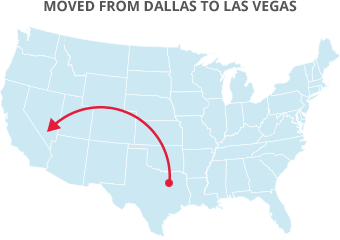

 There is something about a tall stack of boxes and spools of packing tape that is invigorating—here's your chance to sift through all your things and carefully box your treasures, so when you reach your new house and start unpacking the boxes it will seem just like your birthday when you were a kid. Pretend for a minute that is how the whole master plan actually unfolds, and you are not running around the home like a maniac throwing heirloom crystal in with the set of encyclopedias, make sure you purchase the right packing supplies for your moving task.
There is something about a tall stack of boxes and spools of packing tape that is invigorating—here's your chance to sift through all your things and carefully box your treasures, so when you reach your new house and start unpacking the boxes it will seem just like your birthday when you were a kid. Pretend for a minute that is how the whole master plan actually unfolds, and you are not running around the home like a maniac throwing heirloom crystal in with the set of encyclopedias, make sure you purchase the right packing supplies for your moving task.
Boxes and tape are a few of the most important components of packing, and all boxes and tape are NOT created equal. It's acceptable to toss some coffee mugs in an old microwave box and put it on the top shelf of the pantry, but to pack, stack, and transport that box, it will collapse like a house of cards and you'll end up with a lot of broken mugs.
If you're packing packing your own stuff, conduct some research into the materials before you get started. If you are employing a moving company to handle the actual moving, they will probably have the correct heavy-duty boxes, tape, and wrapping stuff you'll want to use. If not, storage facilities, big box stores, and the internet are decent sources for your supplies, but since you cannot do tactile research over the internet, don't depend on reviews to help you—everyone packs differently and "sturdy" and "solid" are very subjective terms.
Look for boxes that are corrugated--a layer of wavy fiber between the inner and outer layers of heavy cardboard. The corrugation gives the box structure and strength, so when you put them on the moving truck they do not collapse. There are various grades of toughness within the corrugated department, so you should purchase the box stability you require for a given item--go with the strongest duty boxes for the most fragile and the heaviest things you will pack.
While you're purchasing boxes, make sure and get plenty of the small ones--heavy belongings go in small boxes, bulky lighter things go in the bigger boxes. For example, books weigh quite a bit and should go in a small box. Blankets and throw pillows are comparatively lightweight and can be placed in the bigger ones.
Picking up inexpensive, low quality tape is where many DIY packers get stymied. If it's low-quality, it will not adhere well. Worse, it will stick to itself when is comes out of the gun and tear in small little slivers and then you have to work at it and aim to get it to unstick in one piece. Splurge on a decent-quality tape gun or two with a padded handle—you'll be overjoyed you did when you're sixty boxes in with a lot more to tape. It is also a brilliant idea to buy your tape in bulk--it costs less and you can normally return what you might not use.
 There are several options for padding around the inside of the boxes. Old towels and sheets are amazing when you need something lining the box, for example when you're packing shoes and do not want them thumping around.
There are several options for padding around the inside of the boxes. Old towels and sheets are amazing when you need something lining the box, for example when you're packing shoes and do not want them thumping around.
Newsprint is hands down the best choice for nearly everything--from wrapping mugs (thread a twisted end through the handle and stick the leftover inside after it is wrapped) to books to small appliances.
Bubble wrap can get pricey, but purchase the good stuff anyway, since that's what you'll use it for. The bubble size fluctuates, but a fair guideline is for your bubble size to pair the item size—save the big bubbles for lining around the entire box. Touch the wrap before you buy, and see how strong it is when you squeeze and pull it. If it's not strong or does not like the bubbles hold, try another brand.
If you haven't moved in a while, and you go looking for boxes, be ready to be amazed at the options you have. If your parents moved, they probably bought their tape and boxes and had the entre neighborhood keeping newspapers for weeks. Now, there are lots of specialty moving supplies you'll find in the stores—a few are really worth the extra cost, some are just reinventing the wheel—it is up to you to discern what is going to be best for your move. Again, be sure you are getting acceptable quality--you do not want your mattresses in unsubstantial plastic sheeting.
Now that you have the boxes under control, focus on how you are going to move the bulky items out the door--the furniture, the lawn mower, the grill--but don't fret, help is on the way. For moving several of these items renting equipment is the best way to go.
Your furniture is more fragile than you think--surface dents and scratches are entirely too common when things come off the truck. You can avoid these issues with some key protection; again, make sure you are getting decent quality materials that stand up to a lot of wear and tear.
The last supplies you'll want to have are for the really heavy and bulky things. Unless you have these items already, it would be best.
Whatever method you're actually transporting your household, your local moving company will be able to help you with all of the speciality items you will require to move. Just remember that you're putting your whole life in these boxes, so take care that your moving supplies are up to the task.

